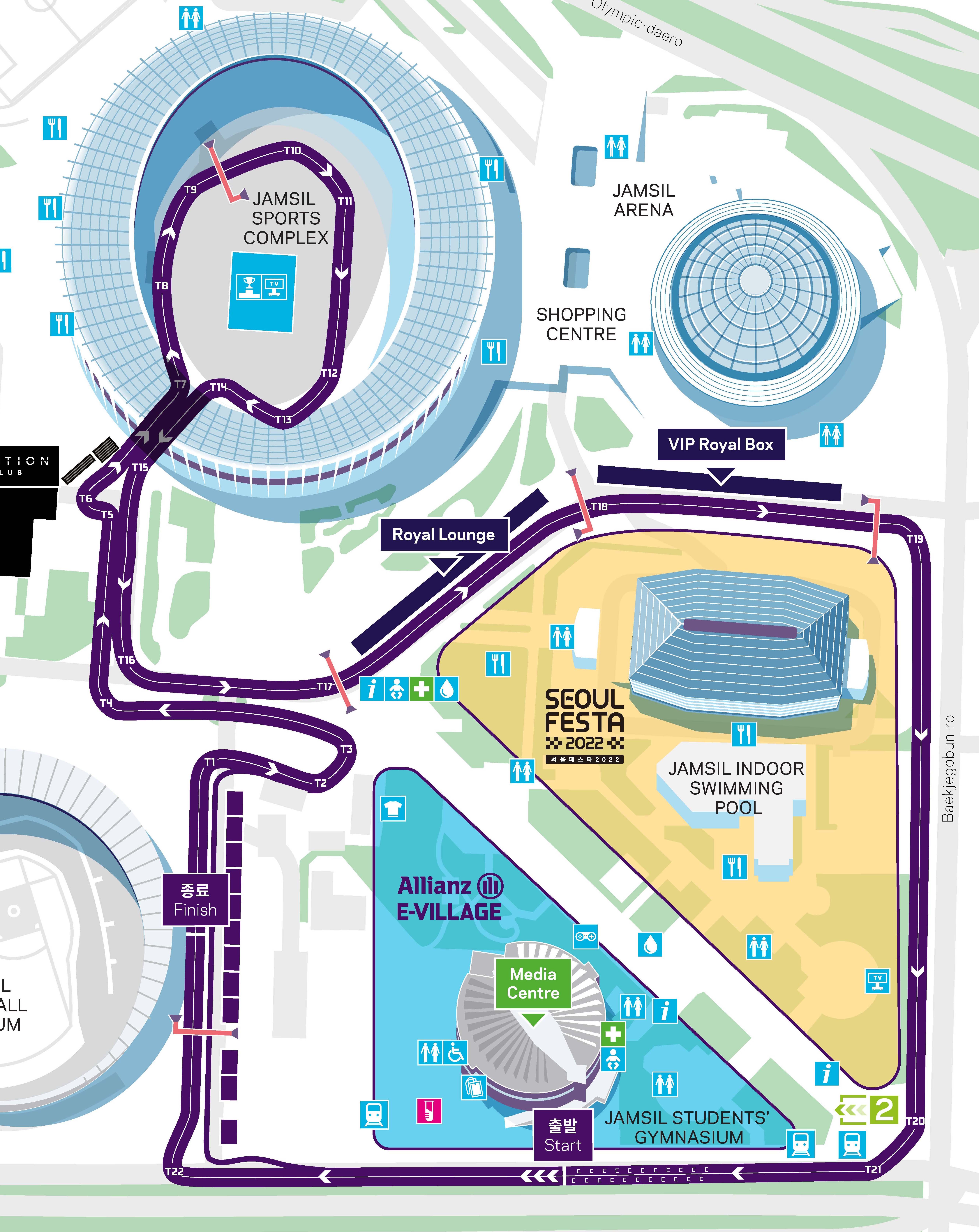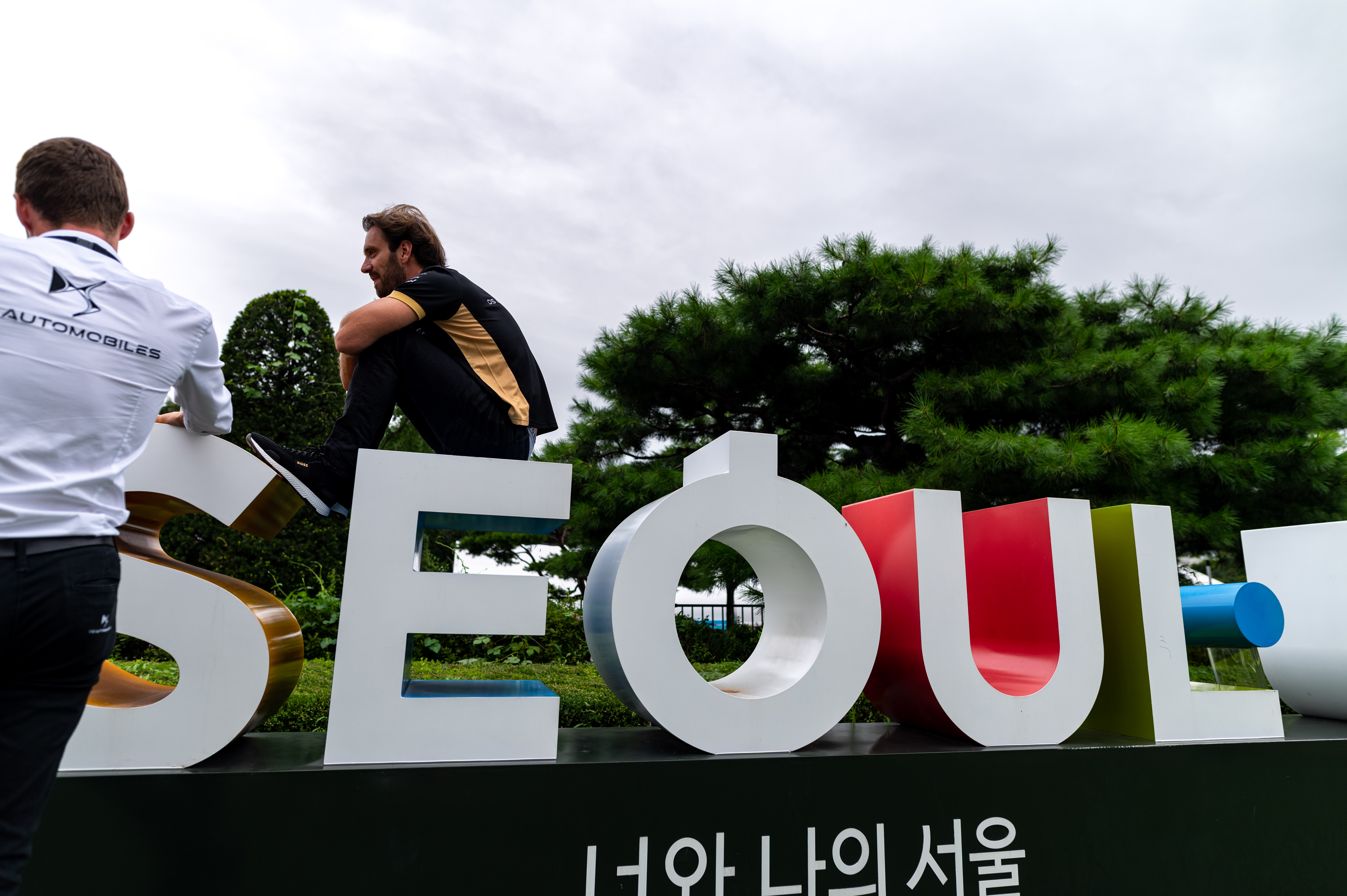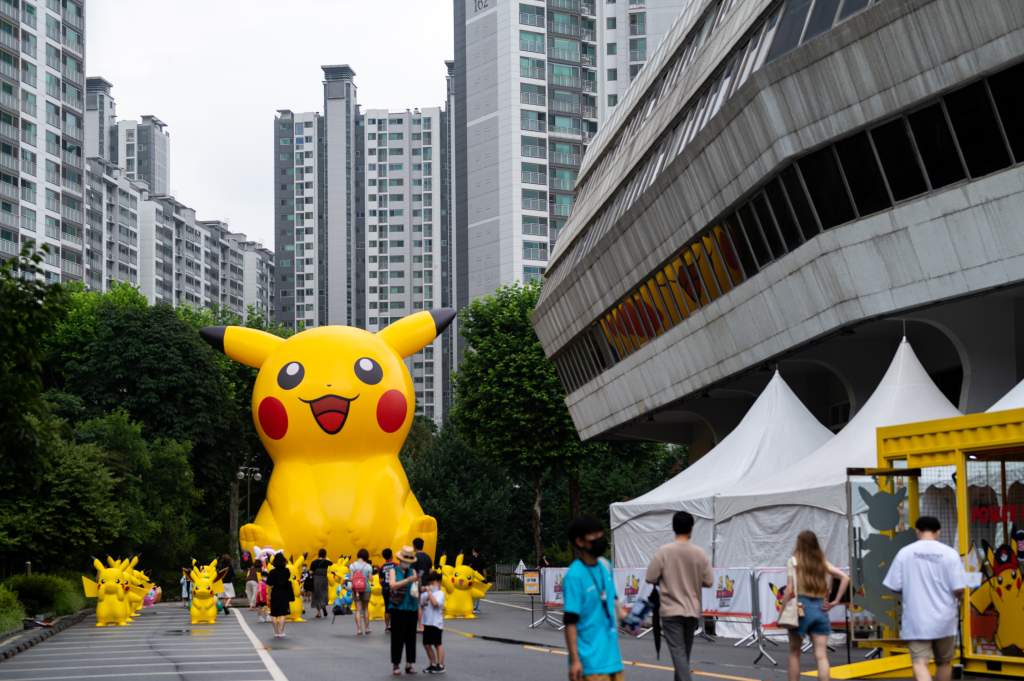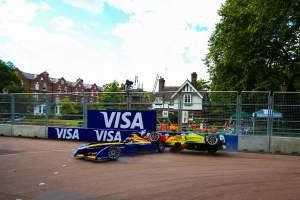A new venue, dodgy weather, and the end of the Gen2 era. The scene is almost set for what promises to be a fascinating finale to the 2021-22 Formula E season at a new track in Seoul.
Stoffel Vandoorne enjoys what should be a comfortable 36-point advantage, while Mercedes appears in control of the teams’ title fight. But Formula E has a funny habit of throwing up the unexpected in often the most arcane and sometimes surreal way.
When Sebastien Buemi went to Montreal in 2017, he had a 10-point cushion and six wins to Lucas di Grassi’s one. Amid both physical and mental wreckage, Buemi capitulated in the most spectacular manner and di Grassi was champion.
The seemingly impossible does happen, especially when the climate, circumstance and elements beyond control are tossed into the mix.
These three key variables below are set to keep teams on the balls of their feet in Seoul this weekend.
The weather

Rain is forecast every day in and around the Jamsil Sports Complex, home to the Olympic stadium, where the first ever Seoul E-Prix races are taking place.
Teams are working on a certainty that some rain will affect the qualifying sessions or the races. The precipitation in South Korea during August is significant and is usually heavy, meaning that session or race suspensions could come into force.
For the drivers and teams this will be an interesting proposition and for Mercedes and Vandoorne a variable they could well do without.
Michelin’s all-weather tyres have been one of the big success stories of Gen2 racing. They are an acquired taste to some driving styles. For instance, former Jaguar driver and 2014/15 champion Nelson Piquet Jr never really got his head around them and other drivers such as Felipe Massa and Jose-Maria Lopez also struggled with their quirks.
But the fact is that they recover well from locking episodes and are durable during the majority of races. One thing they are not though is completely perfect when rain comes late in a race, and let’s face it what tyre would be – ‘all weather’ doesn’t mean ‘all purpose’.
The surface at the Jamsil arena area is relatively unknown but the first team staff who arrived on site reported some bumpy sections on the perimeter roads to the stadium.
There are also several key braking areas after long straights, so wear could be significant, especially if there is a shower in the final 10 minutes of the race and the all-weather nature of the Michelins is called-upon.
The entry and exit points to the actual 1988 Olympic Stadium are short but could become as slippery as former sprinter Ben Johnson’s doctor.
Attack mode placement

The multi-apex, right-hand ‘looper’ in the stadium that seemingly never ends will be a great spectacle for fans and TV viewers, but will it bring much else to the races?
The answer is that yes, it will, because the crucial attack-mode transponder loops will be positioned midway through this section.
Mercedes’ Jake Hughes spent two days in the team’s simulator in Brackley last week as part of his reserve driver role, so is well-placed to assess the corner.
“I don’t think it’ll go down as anyone’s favourite piece of track in the world but for what it is in terms of entertainment value, and getting close to the fans, and allowing them to see the cars up close, it will be fun,” Hughes told The Race.

“Rejoining the track after the attack zone should be quite interesting.
“It’s also not going to be massively energy-sensitive, it’s definitely not like Mexico or Valencia or anything like that, so there will be some forceful passes going on.”
Hughes, who is talking to teams about a potential race seat in Formula E next season, reckons the attack mode zone in the stadium will inevitably become a focal point.
“What I think might become interesting is if the car on the racing line thinks that he’s clear or going to be safe to clear that guy who’s just exiting the attack mode and takes the full racing line up to the wall on the exit,” he said.
“If there is going to be any kind of issue that’ll be where it will happen I would have thought because the guy not taking the attack mode might not see that he wasn’t clear of the guy rejoining from the attack mode. It is quite tight.”
The stadium section will also require drivers to modulate the throttle significantly, something quite rare in Formula E. Add this into a battery temperature-limited race (due to the 30C/31C temperature) and you have a recipe for additional jeopardies, which could well be music to the ears of title outsiders Mitch Evans and Edoardo Mortara.
School’s out for most

For all but probably four or five drivers, this weekend will mark the final races they will have with their current employers. Mix into this valedictory soup the end of the Gen2 era, a new circuit, and the fact some drivers still need to fix up deals for Gen3, and you have the ingredients for potential chaos.
Unfurl over this the erratically flown flag of what constitutes a defensive move and what is moving under braking, and the assumption is that we might be waiting a very long time for the final results this weekend.
It would be entirely fitting of the Gen2 era for it to all end with some fantastic racing but also scattered car-parts around the Jamsil complex. In fact, it feels inevitable to some degree. The hope is that it won’t be a wholesale mess and affect the title fight directly.







